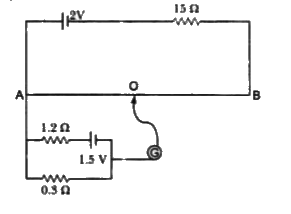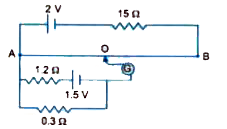If potential gradient of a wire decreases, then its length
remains constant
decreases
increases
none of the above
The correct Answer is:C
To solve the question "If potential gradient of a wire decreases, then its length will be?", we can follow these steps:
1. Understand the Concept of Potential Gradient:
- The potential gradient (pg) is defined as the change in potential difference (V) per unit length (L) of the wire. Mathematically, it can be expressed as:
Potential Gradient (pg)=VL
2. Analyze the Given Condition:
- The problem states that the potential gradient of the wire decreases. This means that the value of pg is getting smaller.
3. Assume Constant Voltage:
- For this analysis, we will assume that the potential difference (V) across the wire remains constant. This is an important assumption because it allows us to isolate the effect on length (L).
4. Relate Potential Gradient and Length:
- From the formula for potential gradient, we can rearrange it to express length in terms of potential gradient:
L=Vpg
- Here, if the potential gradient (pg) decreases while V remains constant, the length (L) must increase to maintain the equality.
5. Conclusion:
- Therefore, if the potential gradient of a wire decreases, the length of the wire must increase.
Final Answer:
If the potential gradient of a wire decreases, then its length will increase.
---
- The potential gradient (pg) is defined as the change in potential difference (V) per unit length (L) of the wire. Mathematically, it can be expressed as:
Potential Gradient (pg)=VL
- The problem states that the potential gradient of the wire decreases. This means that the value of pg is getting smaller.
- For this analysis, we will assume that the potential difference (V) across the wire remains constant. This is an important assumption because it allows us to isolate the effect on length (L).
- From the formula for potential gradient, we can rearrange it to express length in terms of potential gradient:
L=Vpg
- Here, if the potential gradient (pg) decreases while V remains constant, the length (L) must increase to maintain the equality.
- Therefore, if the potential gradient of a wire decreases, the length of the wire must increase.
If the potential gradient of a wire decreases, then its length will increase.
Topper's Solved these Questions
- QUESTION BANK 2021Book:NAVNEET PUBLICATION - MAHARASHTRA BOARDChapter:QUESTION BANK 2021Exercise:CURRENT ELECTRICITY (Very Short Answer (VSA) ( 1 MARK Each ) )
Explore 10 Videos
- QUESTION BANK 2021Book:NAVNEET PUBLICATION - MAHARASHTRA BOARDChapter:QUESTION BANK 2021Exercise:CURRENT ELECTRICITY (Short Answer I (SA1) ( 2 MARKS Each ) )
Explore 8 Videos
- QUESTION BANK 2021Book:NAVNEET PUBLICATION - MAHARASHTRA BOARDChapter:QUESTION BANK 2021Exercise:Electrostatics (Long Answer ( LA) ( 4 marks Each) )
Explore 3 Videos
- MULTIPLE CHOICE QUESTIONSBook:NAVNEET PUBLICATION - MAHARASHTRA BOARDChapter:MULTIPLE CHOICE QUESTIONSExercise:Communication Systems
Explore 6 Videos
- SHORT ANSWER QUESTIONSBook:NAVNEET PUBLICATION - MAHARASHTRA BOARDChapter:SHORT ANSWER QUESTIONSExercise:Assignments
Explore 3 Videos
Similar Questions
Knowledge Check
Water potential gradient is
AThe overall movement of solutesBThe evaporation of water from the leaves.CThe overall movement of waterDPressure gradient minus water potentialThe unit of potential gradient is
Avolt cmBohm cmCvolt/cmDvolt/ampereIf the value of potential gradient on potentiometer wire is decreased, then the new null point will be obtained at
Alower lengthBhigher lengthCsame lengthDnothing can be said
In the following potentiometer circuit AB is a uniform wire of length 1 in and resistance R the potential gradient along the wire and balance length AO (= l).

View Solution(i) State the principle of working of a potentiometer.
(ii) In the following potentiometer circuit AB is a uniform wire of length 1 m and resistance 10Ω
Calculate the potential gradient along the wire and balance length AO (=l)

View Solution(i) State the principle of working of a potentiometer.
(ii) In the following potentiometer circuit AB is a uniform wire of length 1 m and resistance 10 Ω . Calculate the potential gradient along the wire and balance length AO (= l).

View SolutionS.I. unit of potential gradient is
View SolutionA battery of emf 26V and internal resistance 0.4 ohm is connected to a resistance of 10ohm and a potentiometer wire of length 10m. What is the potential gradient on the wire if the resistance of the potentiometer wire is 5 ohm –
View Solution

